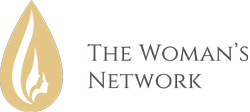Content
There is a need for monitoring functions that will enable seamless and secure operations across applications and domains through secure authentication. It’s a tech company with a full banking license in Germany which means it can offer banking services EU-wide. Meanwhile, Banking as a platform is a digital ecosystem that allows third-party solutions to work directly with the bank’s infrastructure without a BaaS provider. This way, banks can give their customers a wider choice of options. Founded in 2009, this German company went as far as creating its own BaaS platform. The teams at Fidor created over 40 standardized future-proof APIs that are easily integrated with any of the clients’ services.
Some well-known examples of neobank companies include Chime, Current, Aspiration, Acorns, Varo, and even Uber debit and Spotify balance. In platform banking, finance companies employ systems delivered by other fintechs to complement existing offerings. For example, a firm can incorporate a market-ready robo-advisor into their mobile banking app or website.
Understanding Banking as a Service
BaaS partners expand the number and quality of banking applications available to customers. Their speed to market for embedded banking technology is quicker than a traditional bank, which is more bureaucratic. BaaS is different from open banking, which refers to the permissioned sharing of bank customer data and information in FinTech products and services. Open banking serves as one catalyst for deploying BaaS applications.
- Recent technological developments have led to an increase in demand for Banking as a Service.
- Additional benefits for end users include enhanced customer experience, better security and more ways to manage their money.
- This stack can be used with a licensed bank as foundation, a BaaS as middleware, and an ecosystems of FinTechs on top.
- This is made possible through the use of APIs , which enables third-party companies and developers to access the core banking services of a financial institution.
- With fintech expanding, I expect banks to want to go beyond being a bank partner and become a BaaS provider as well.
Raisin is one of Europe’s most successful savings and investment marketplaces. The company connects retail customers with banks looking to expand their deposit reach. Carefully review the services offered by a particular provider to ensure your business needs are covered. We’ve listed only a few of the most successful BaaS providers and platforms on the market.
Non-Financial Institutions
The landscape of digital financial services is changing rapidly, and Banking as a Service is paving the way for a new reality. Banks, fintechs, service providers, and brands can achieve synergy by building functional and efficient integrated solutions. In an interconnected banking as a service platform environment, everyone will reap their respective benefits, provided they promptly adjust strategies. Banking as a Service enables fintech companies to go to market faster, as they can leverage the existing infrastructure and services of traditional financial institutions.
Banking as a Service startups are often at the forefront of new technologies and business models in the financial services industry. By leveraging the capabilities of traditional financial institutions, they can develop and offer new and innovative products and services. They range in size from startups and small businesses to Fortune 500 enterprise companies. These businesses, directly benefiting from BaaS, offer their customer base convenient access to embedded financial services and banking products.
Treezor’s partnership with Qonto
They can also automatically rebalance the portfolio in accordance with the customer’s investment strategy. The space is getting increasingly crowded, with dozens of platforms claiming to offer banking-as-a-service. But what they mean by that term—and their ability to deliver on it—varies widely. Others include Bond, Solid, Treasury Prime, Stripe Treasury, Moov, Synctera, and Column.
That wouldn’t be possible without partnering with a banking-as-a-service platform; in fact, Veryable had previously tried four other solutions. In 2021, the transaction value of embedded finance topped $2.6T, with hundreds of platforms participating. Some may say that Banking as a Service is white-label banking and they would be right.
What Is Embedded Finance in Banking?
In contrast, BaaS banking provides the option to embed financial services, i.e., customer’s infrastructure is connected to the bank’s infrastructure through modern technologies. The benefits of using as-a-service models and embedding financial services have been felt by fintech businesses and large financial and technology https://globalcloudteam.com/ companies – both customers and those who provide services. Digital challenger banks are now running at a fraction of the cost of incumbents. Some technology companies have obtained banking licenses, enabling them to offer their BaaS platforms to distributors that want to provide financial products to their customers.

When not working, he shares a glass a bourbon or two, couched on a bean bag playing FPS video games or binging on Better Call Saul with family. We all know how important bank interfaces are for fintech companies. For fintech startups, the BaaS model becomes the only way to break into the market.
Loans and Buy Now, Pay Later
Company is a licensed e-money institution which has the right to execute activities related to issuance of e-money and provision of payment services around the European Union. Verified Payments UAB is supervised by Bank of Lithuania under the Electronic Money Regulations (Licence No. 27). For example, different banking-as-a-service providers offer different sets of services. Banks that offer BaaS can reach a greater number of customers and profit greatly by teaming up with non-financial businesses but also fintech companies.


